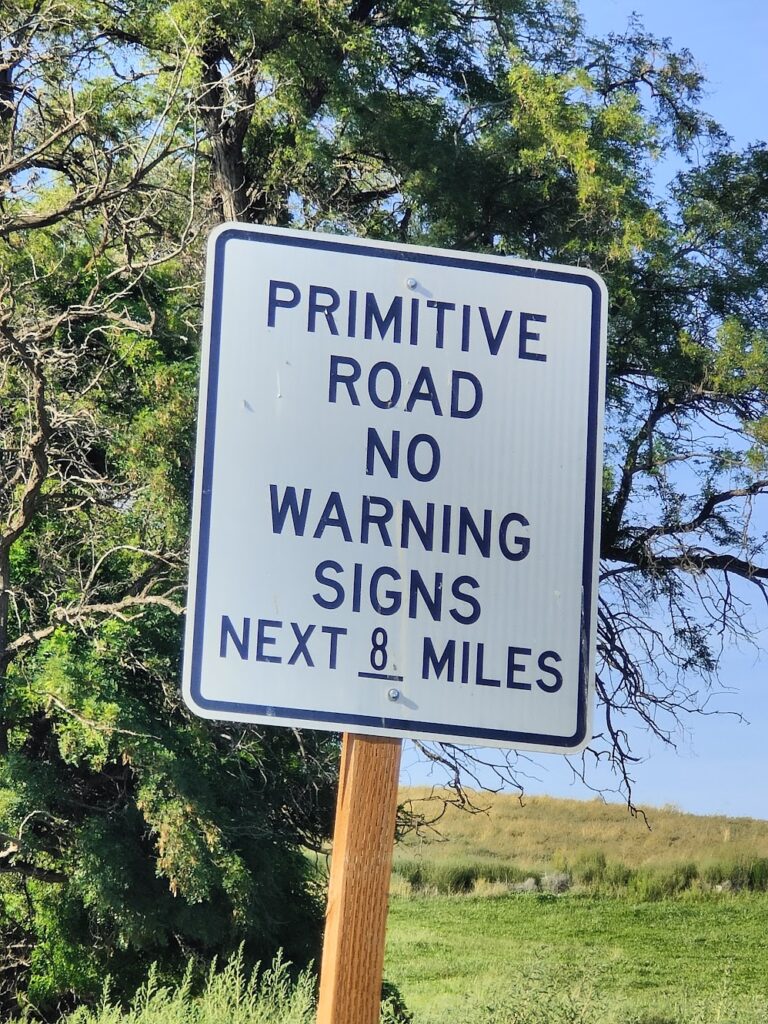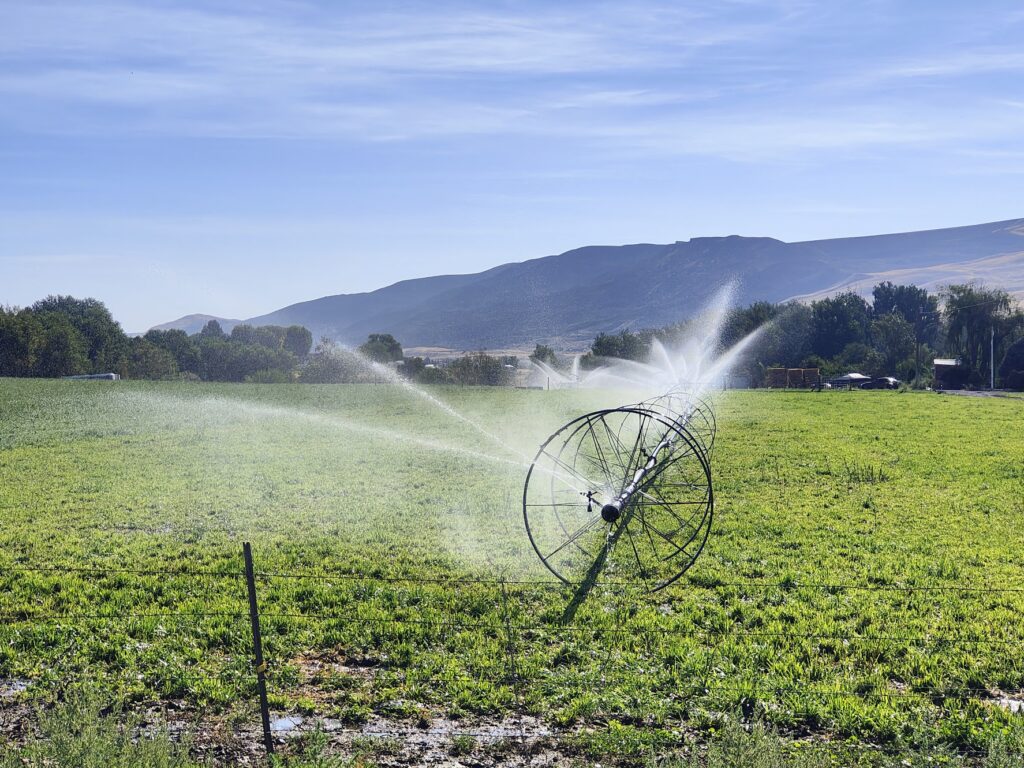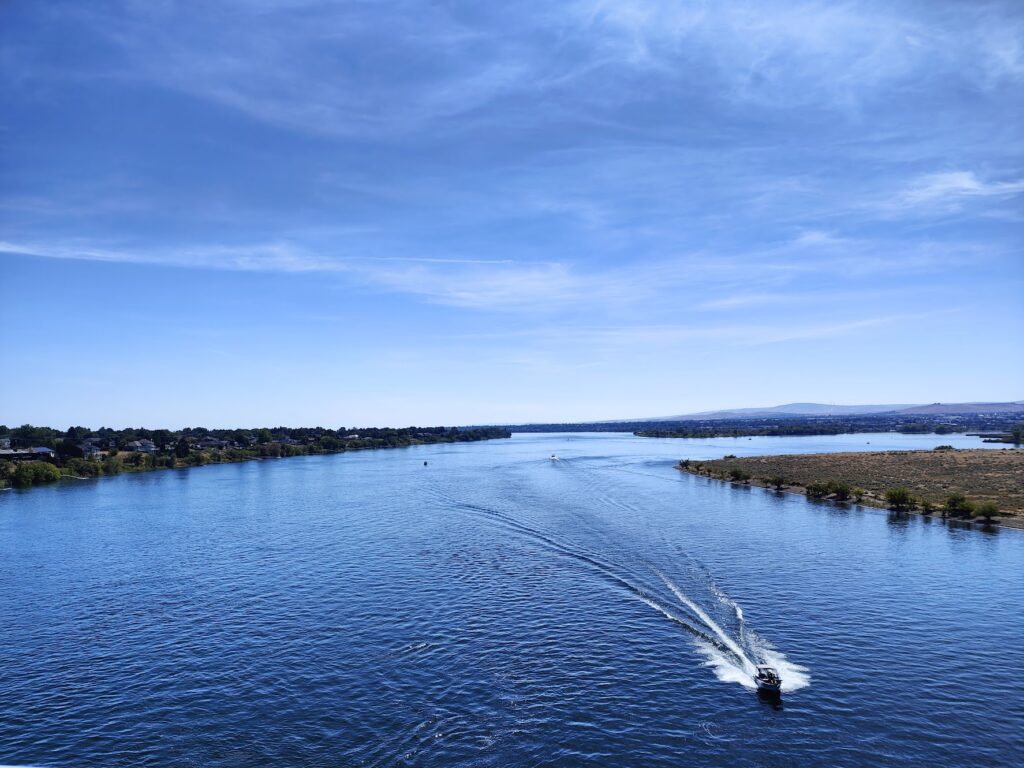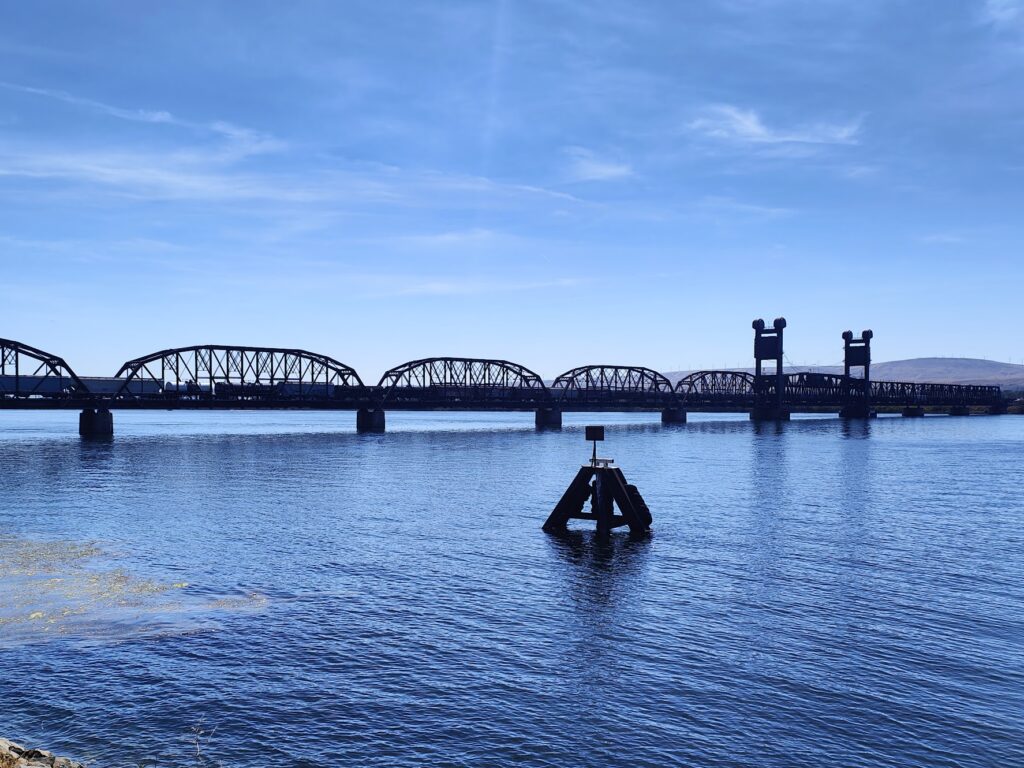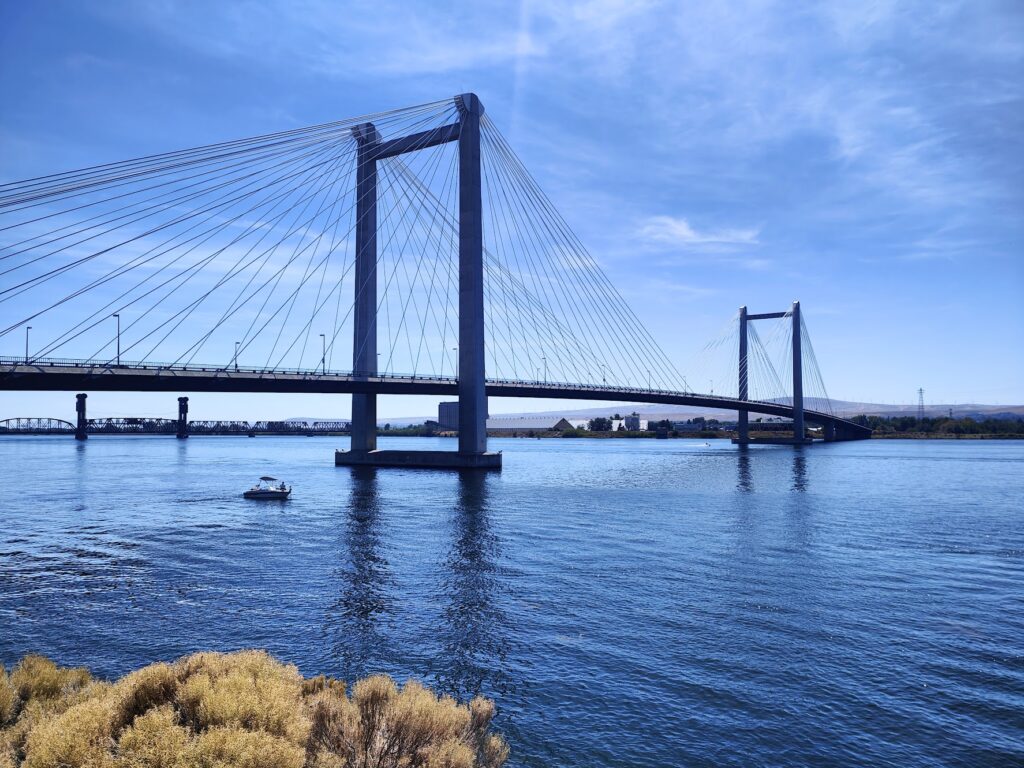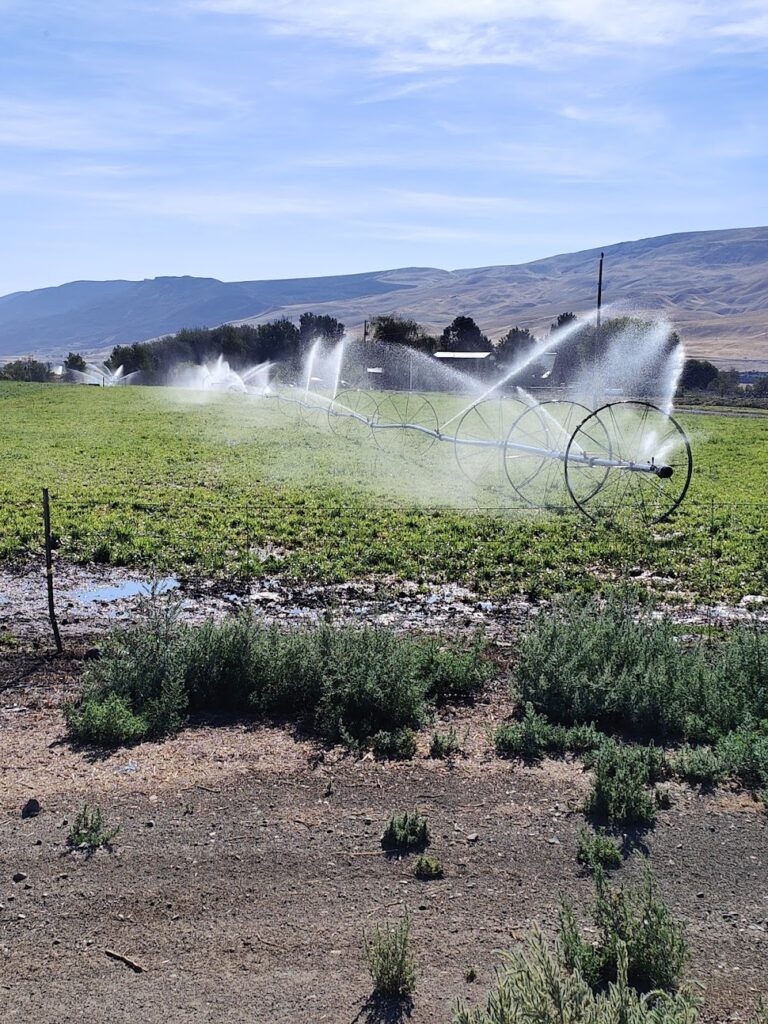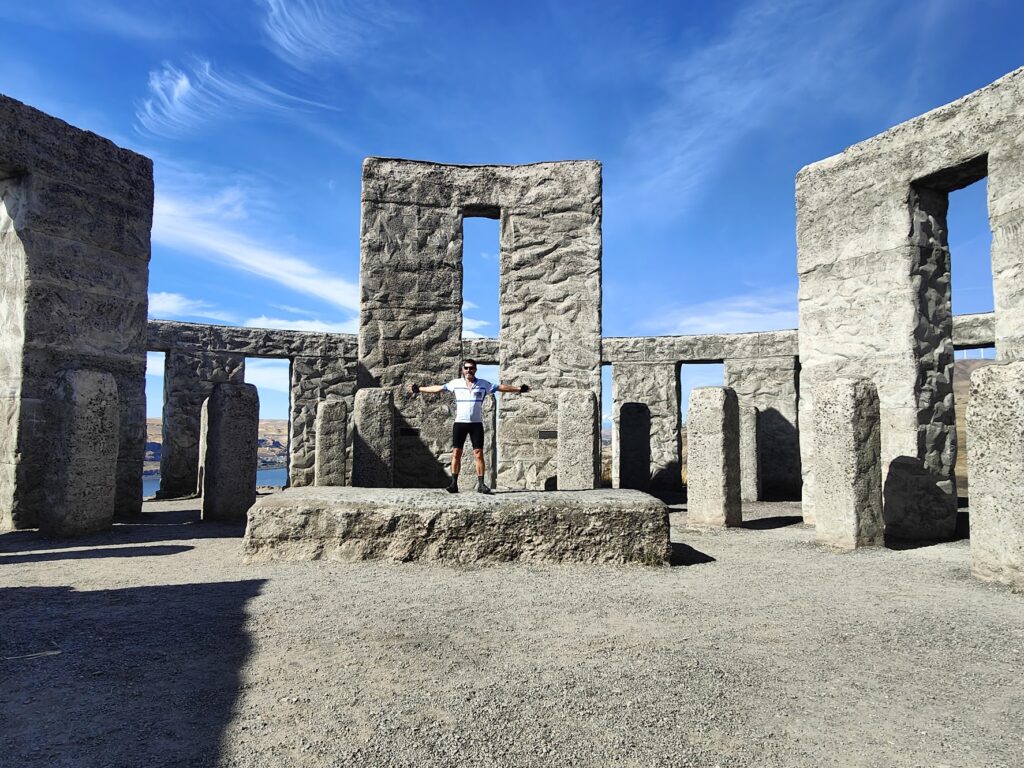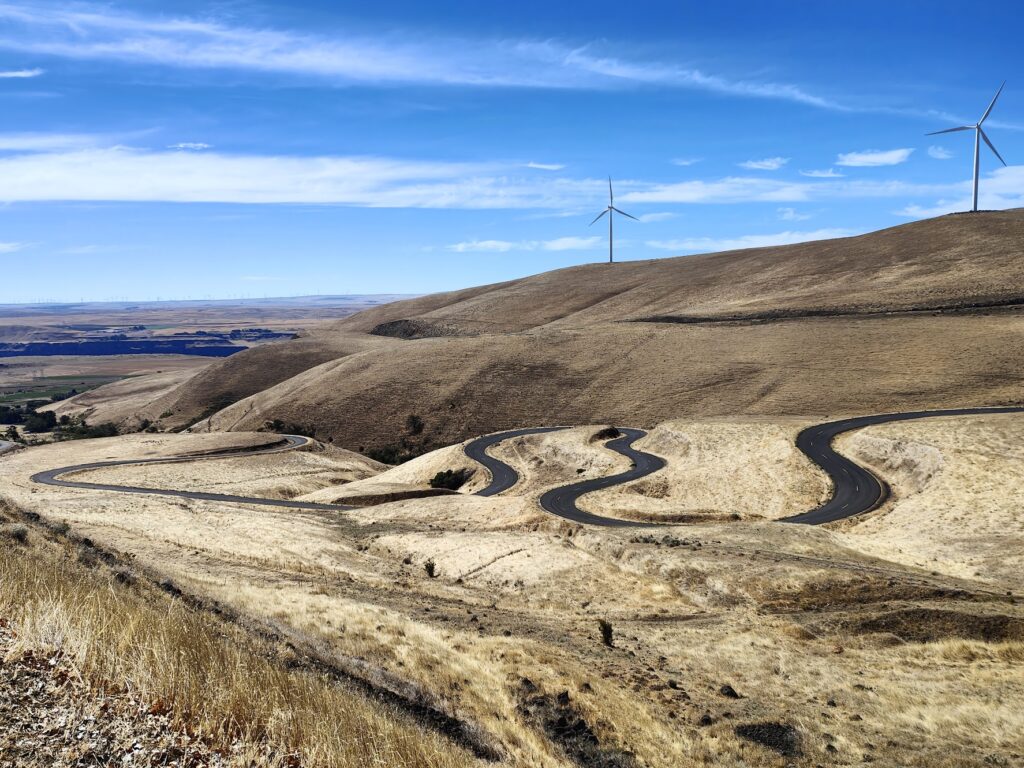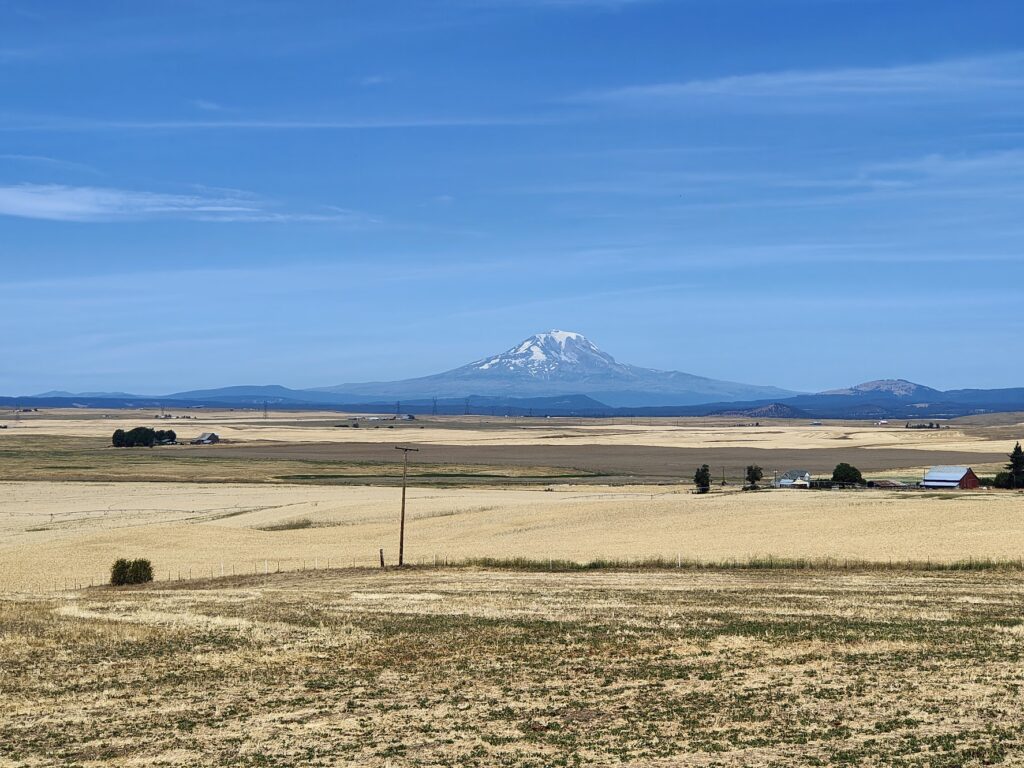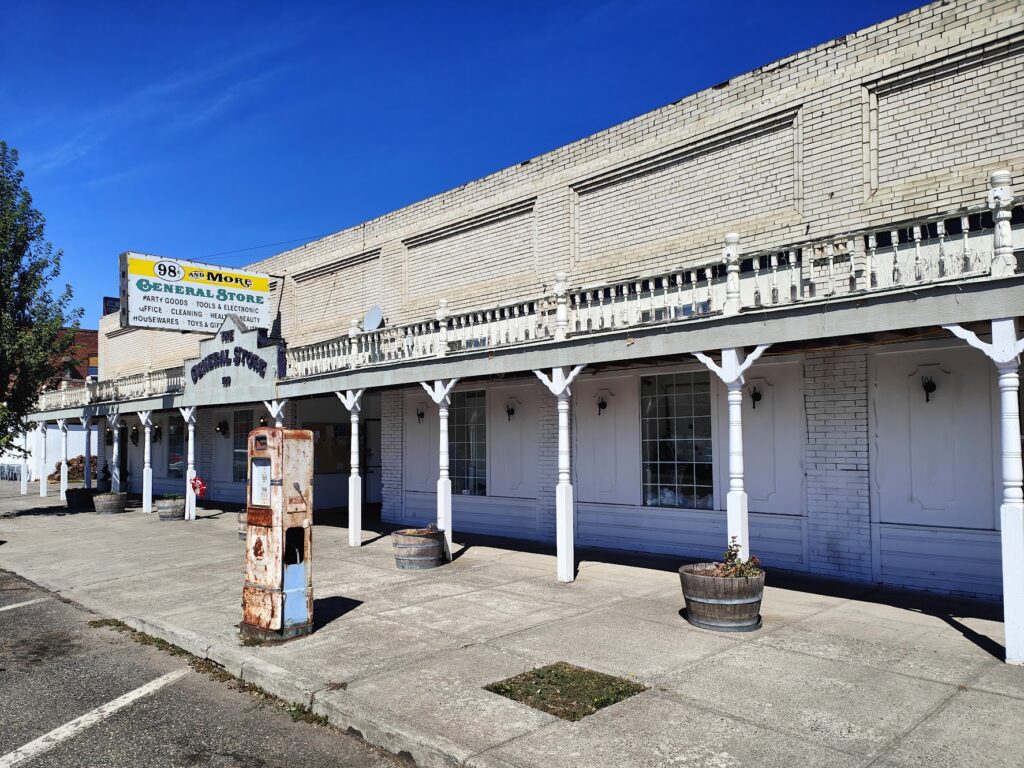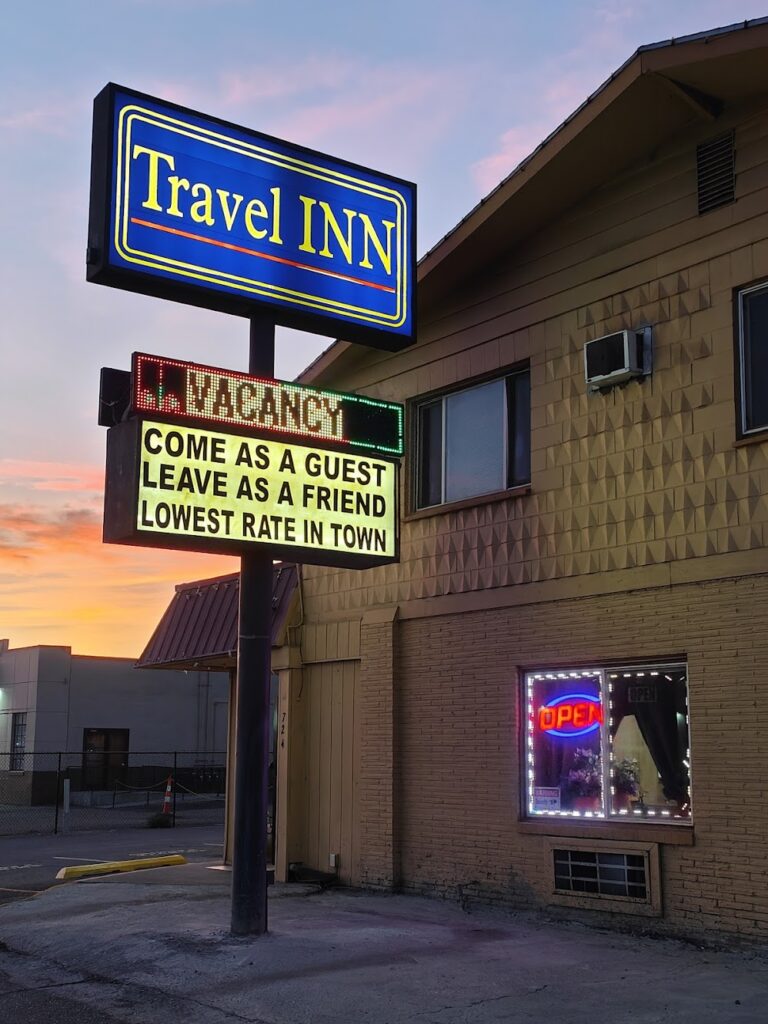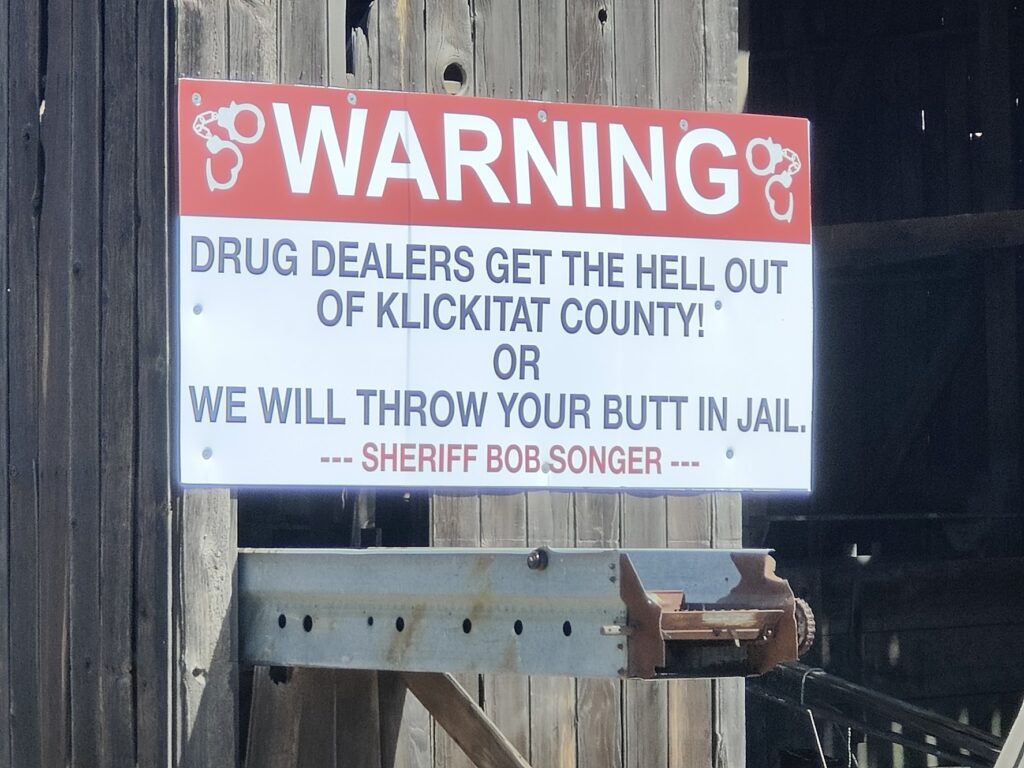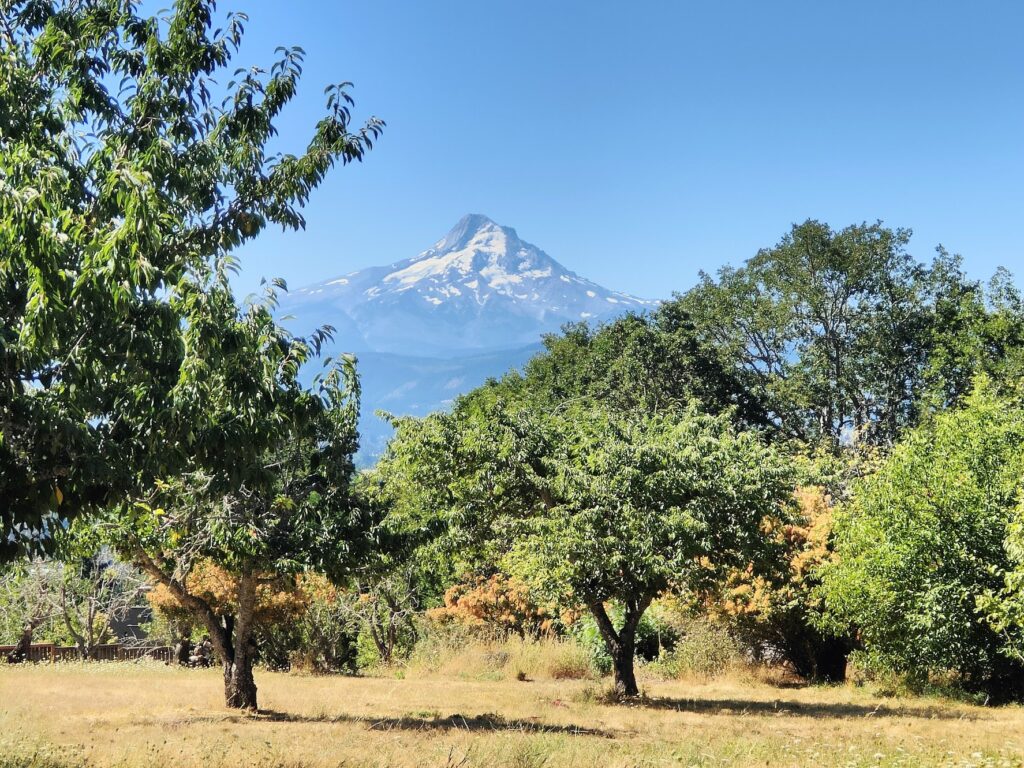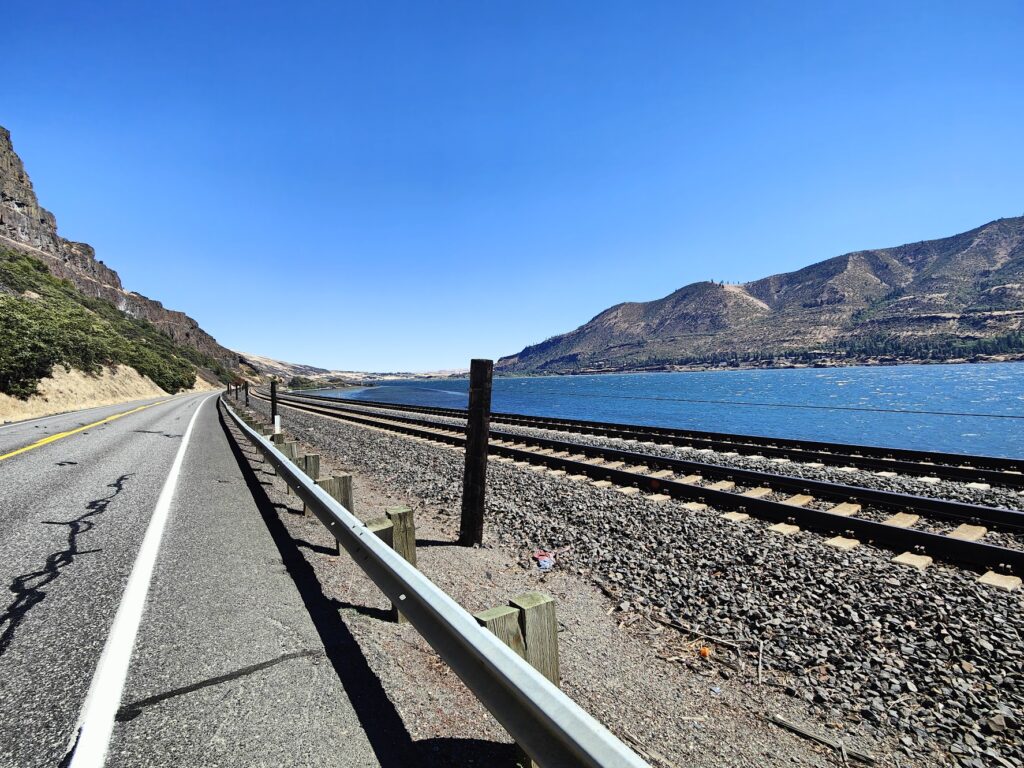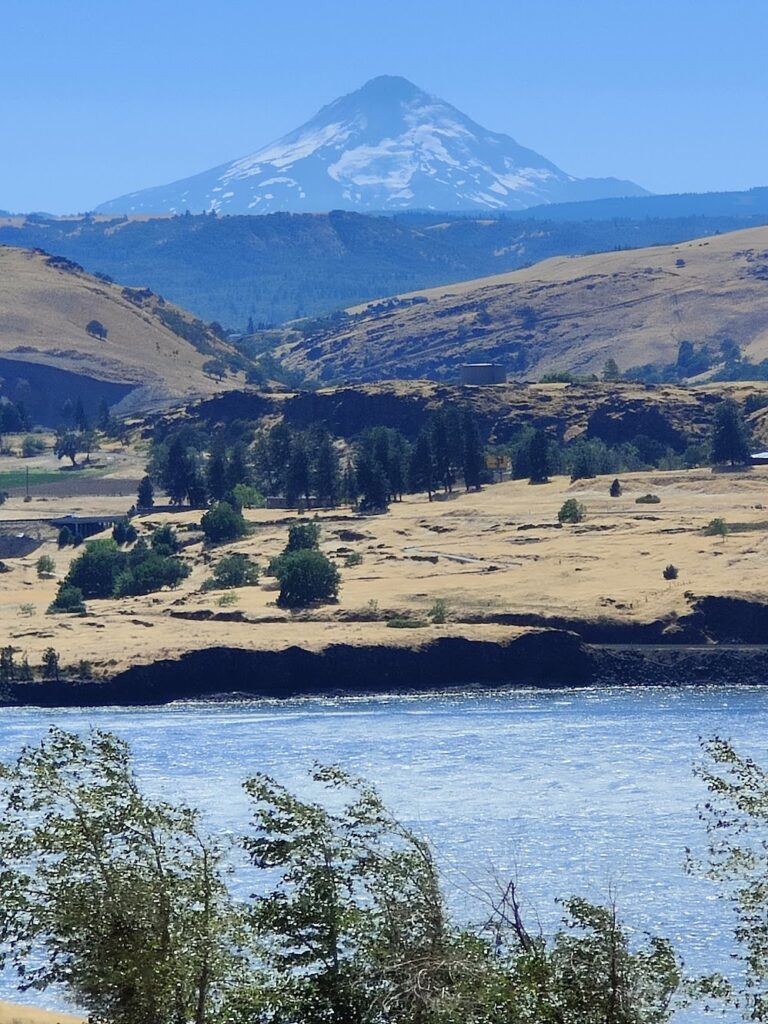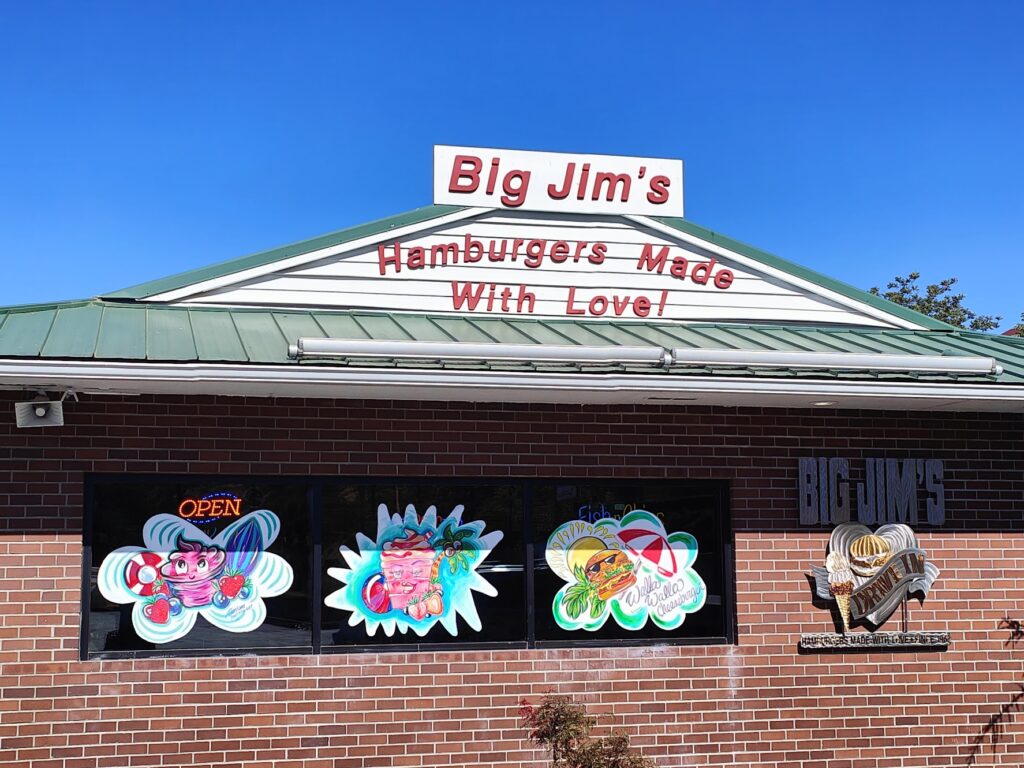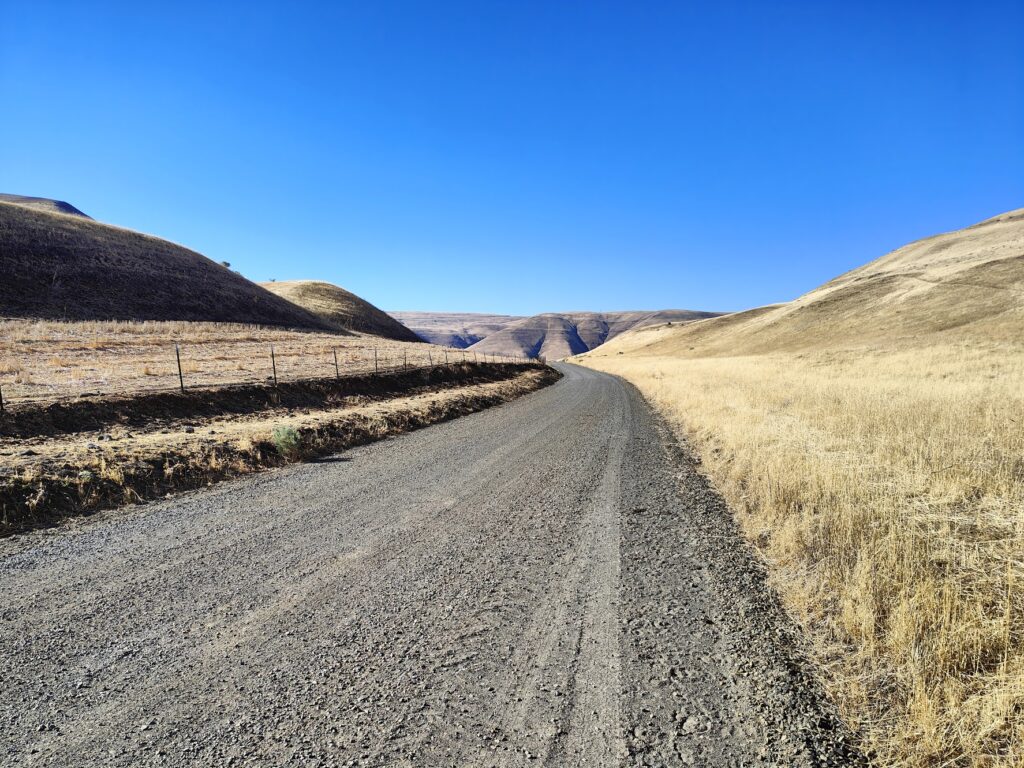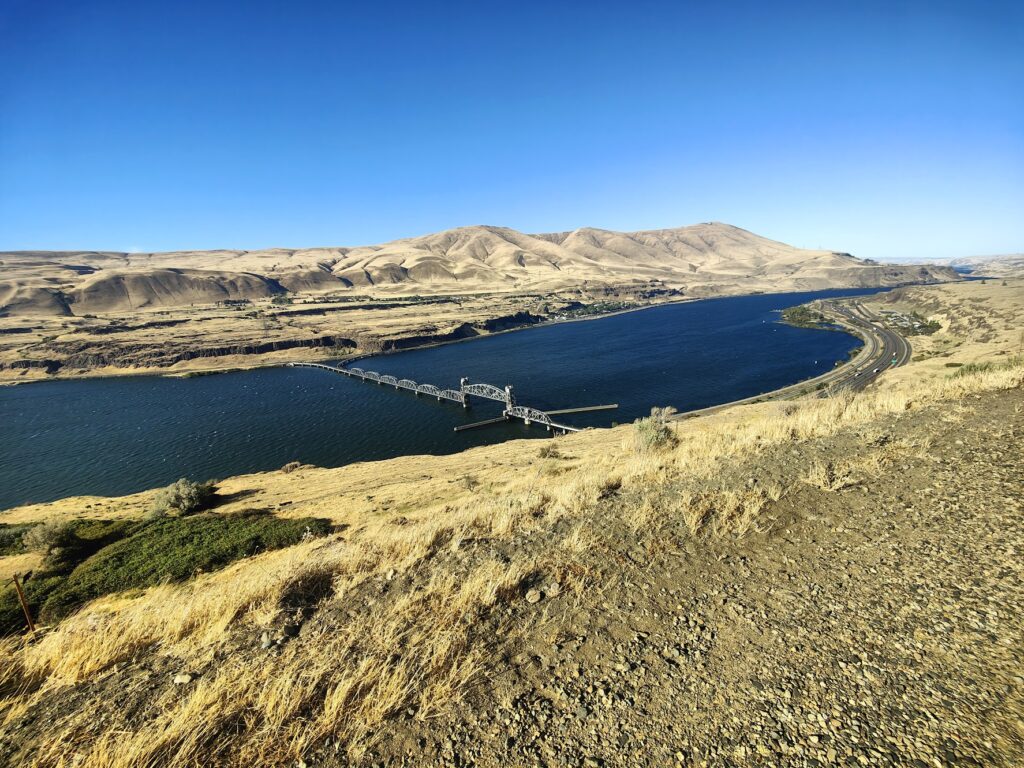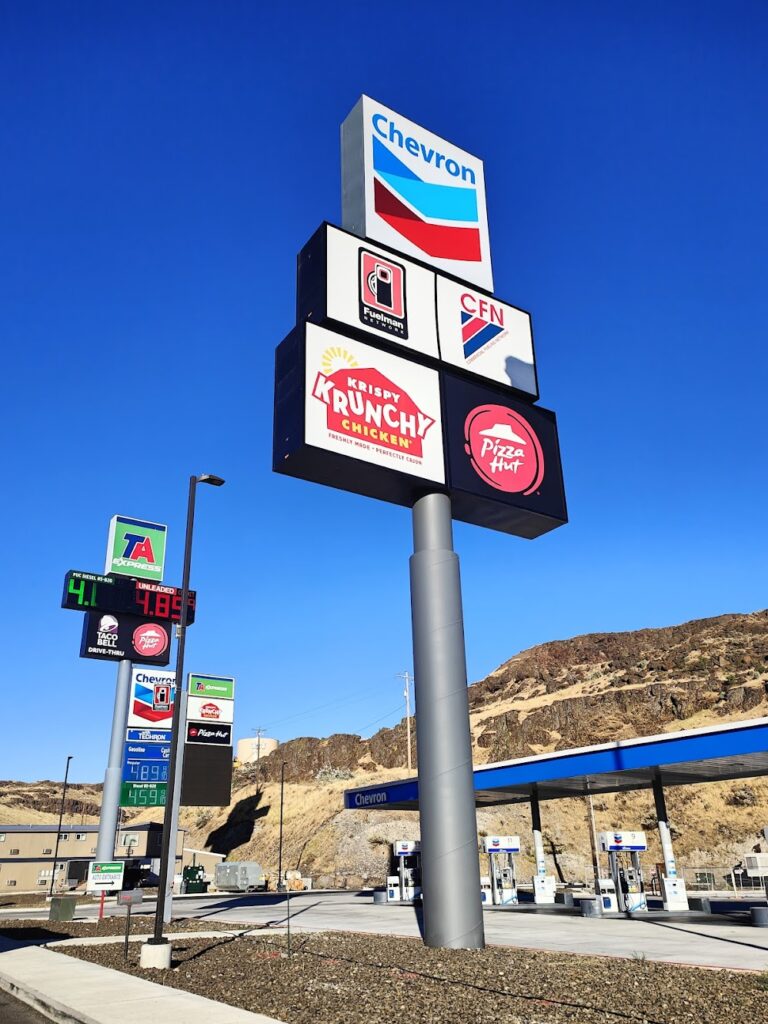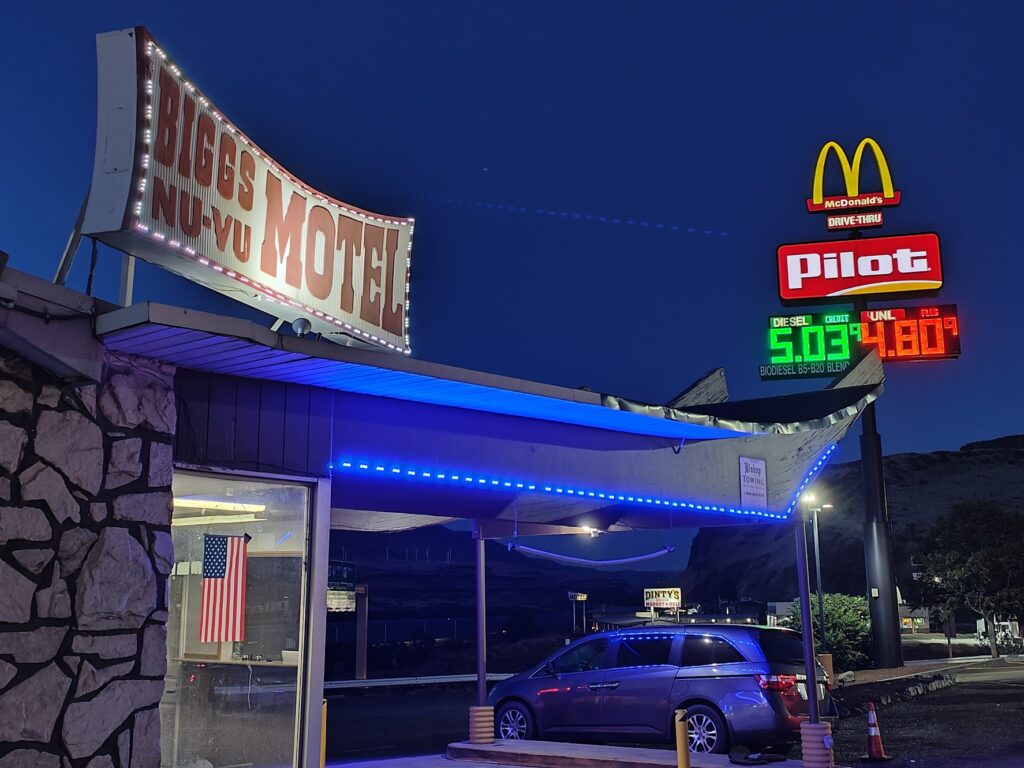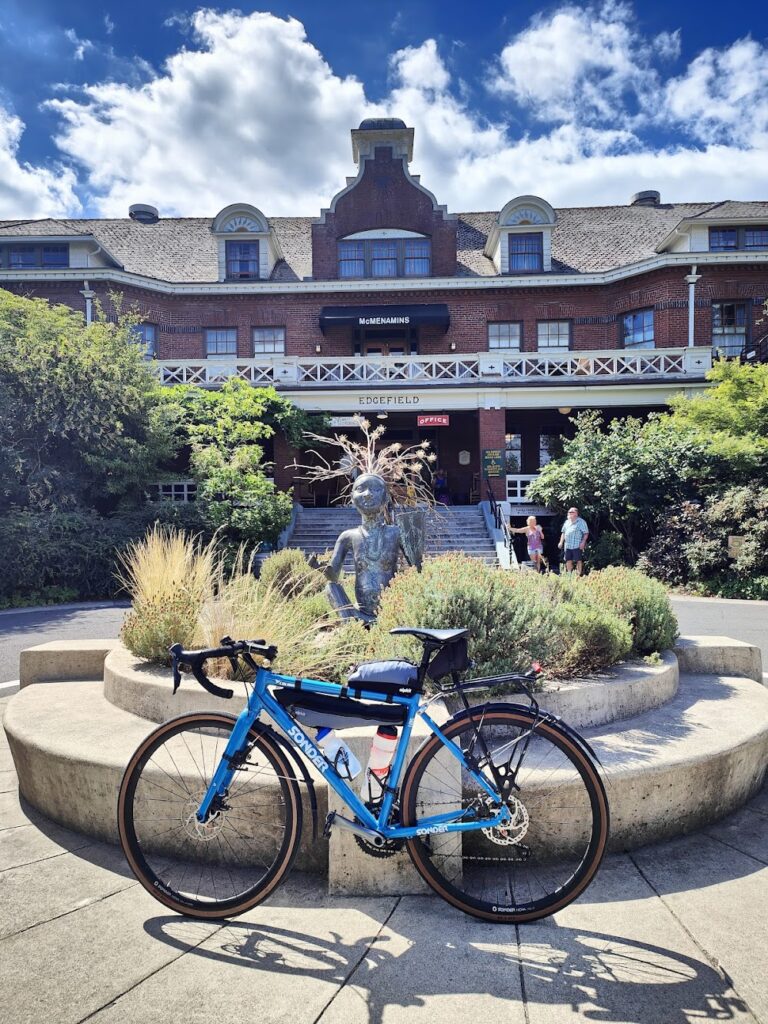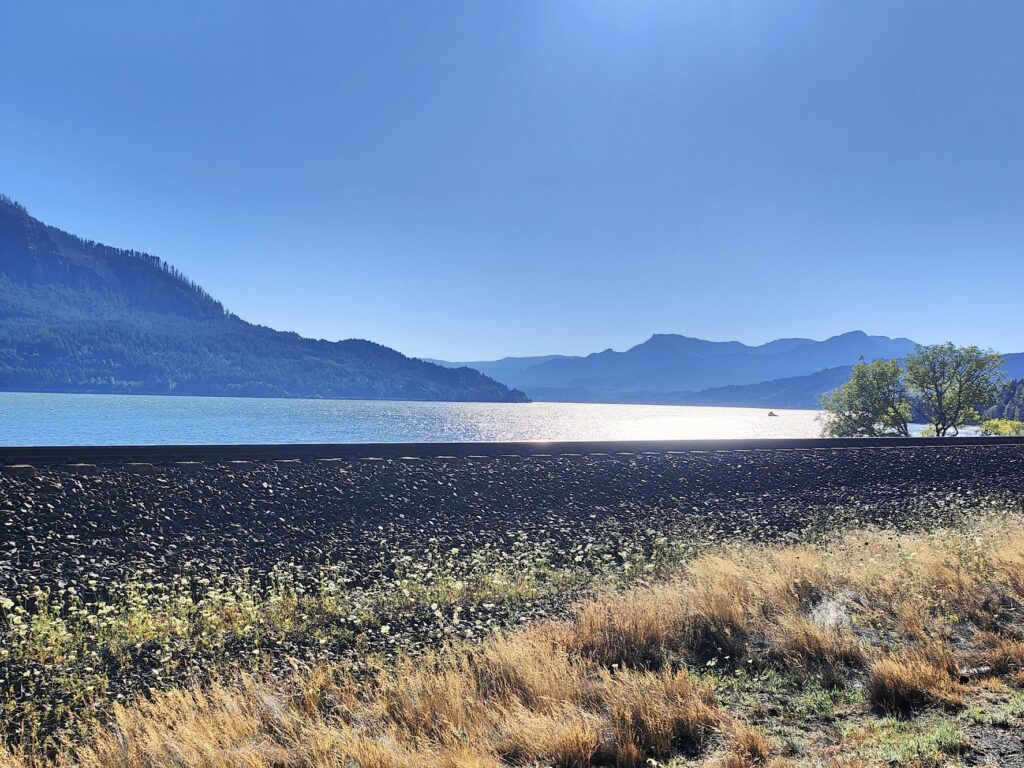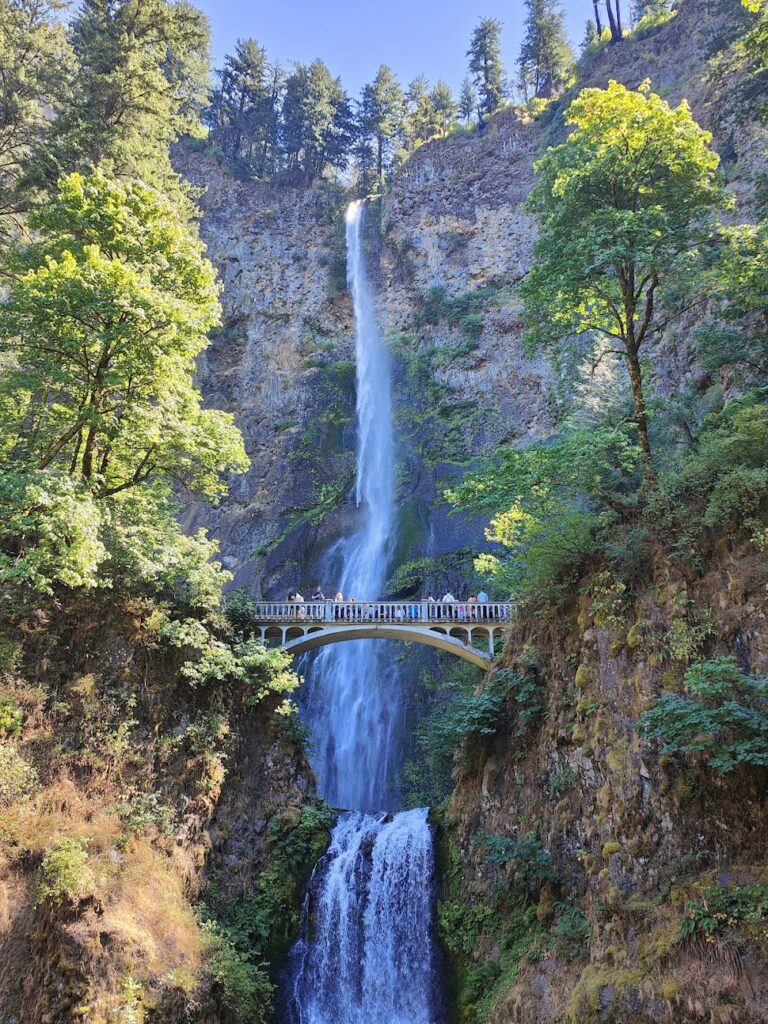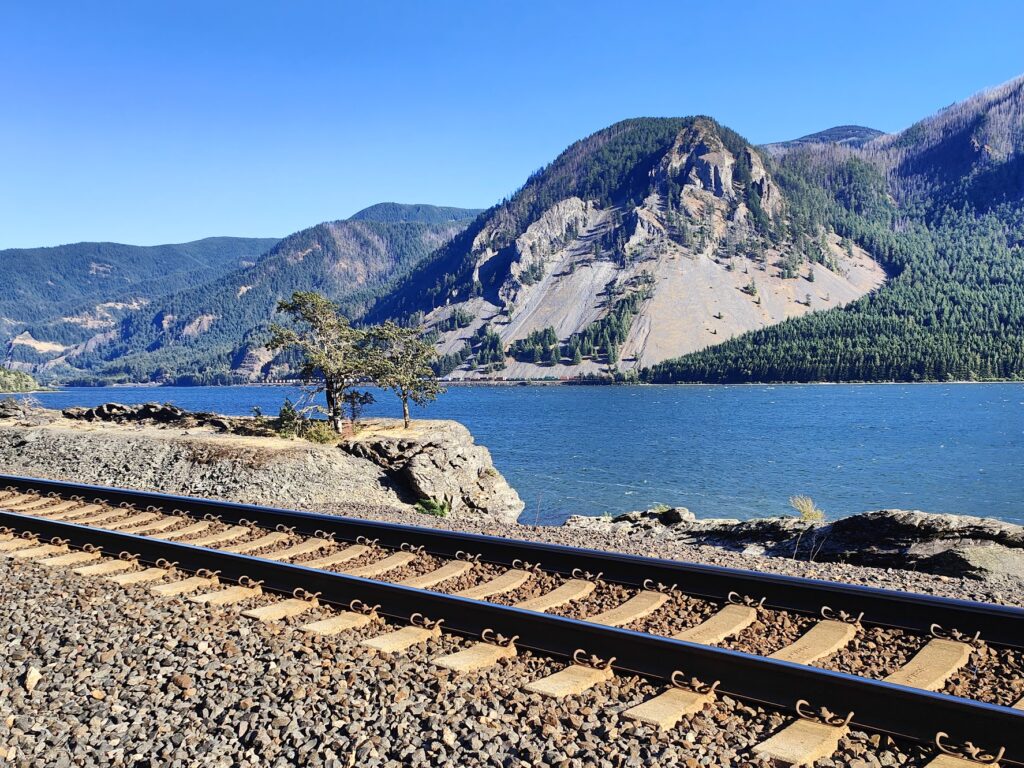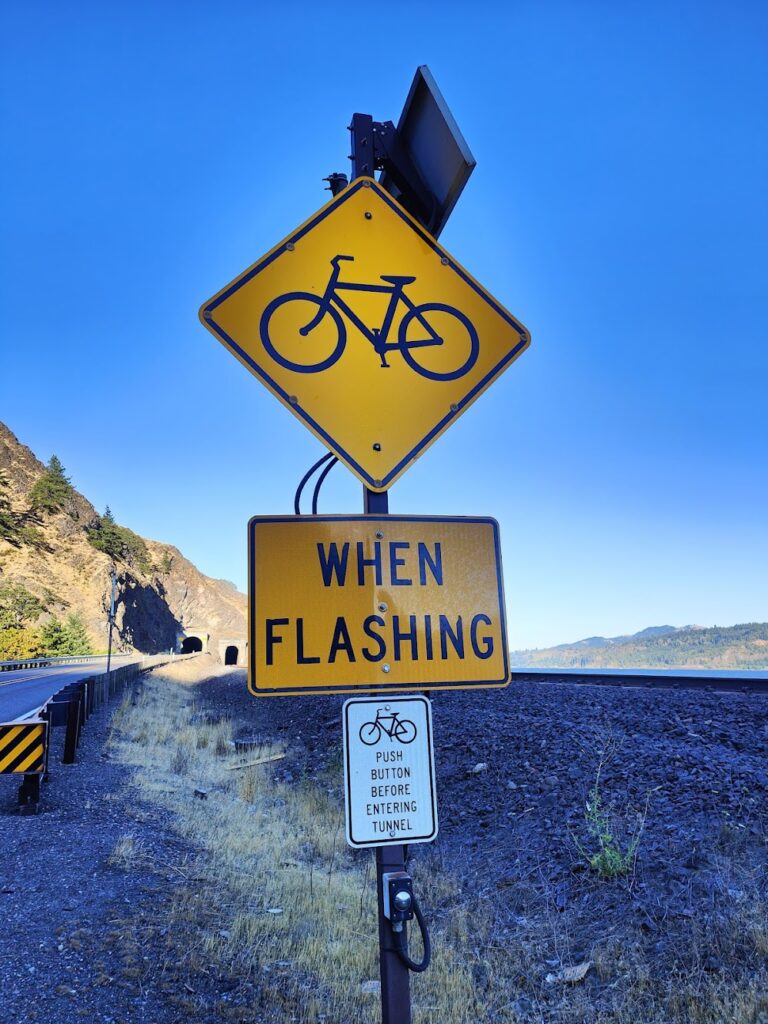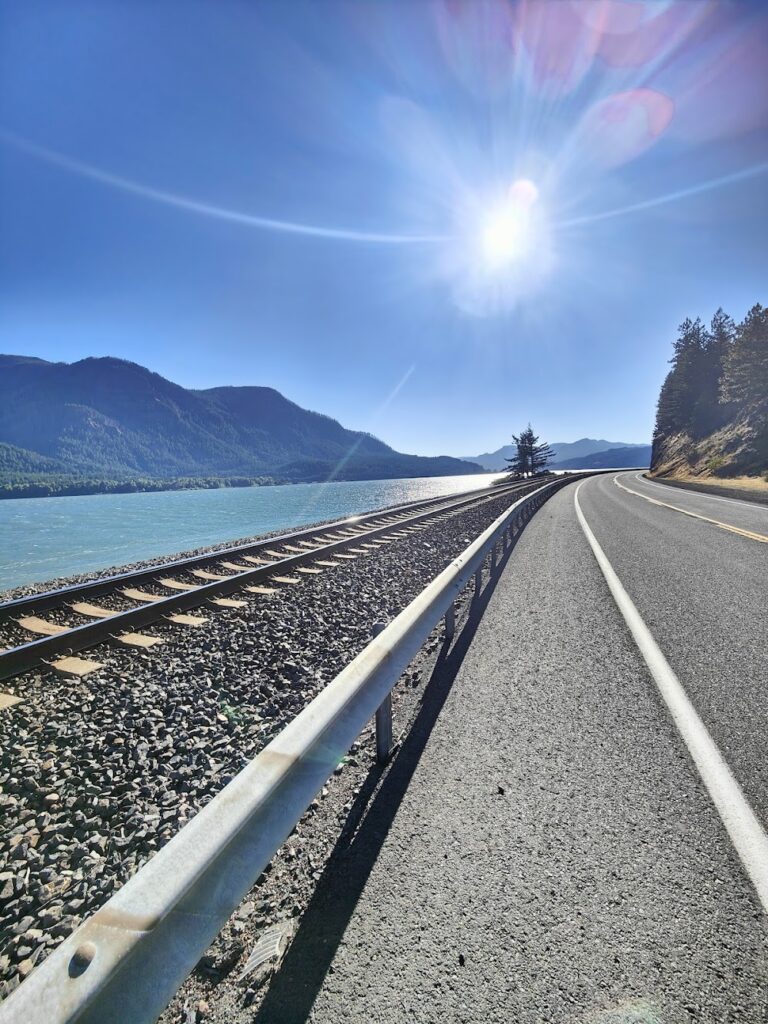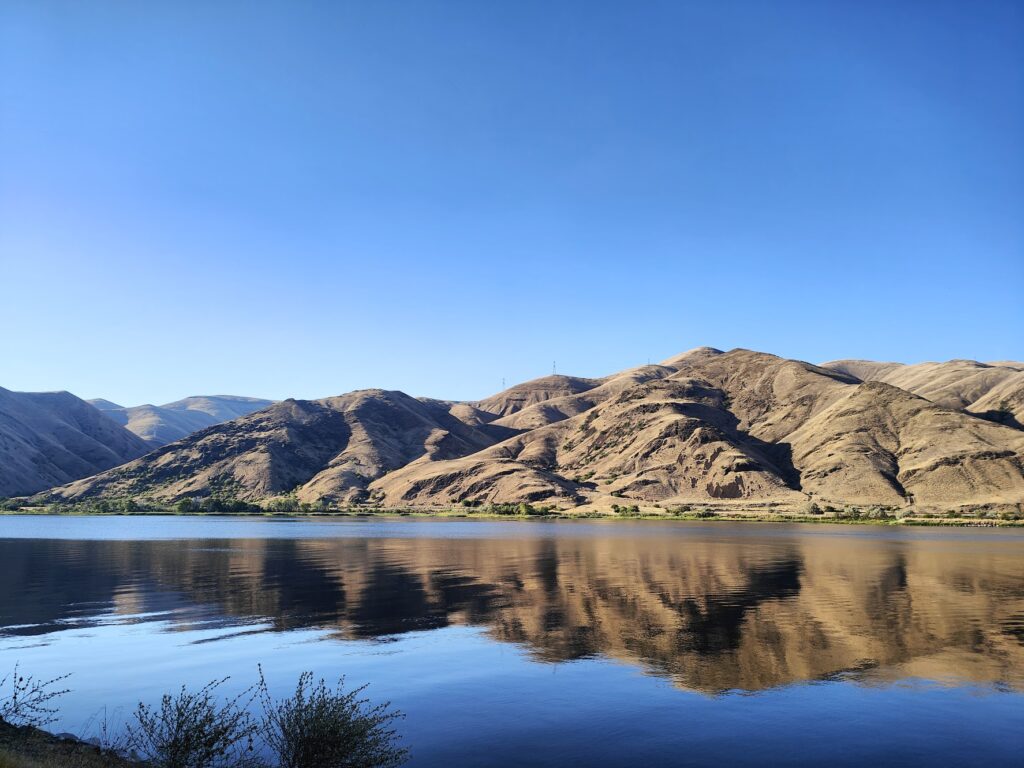
I’m in Idaho tonight! Only by about a mile, but it counts. Oregon and Washington are behind me and I feel a small sense of achievement. I should probably feel a big sense of achievement actually after the last 2 days. Each was over 100 miles of cycling and each was completed in extreme heat. Today, the temperature was showing 98F at noon, 100F at 4.30pm and down in Lewiston, where apparently it is always warmer, I saw a sign saying 112F just before 7pm. Either way, it was very hot.
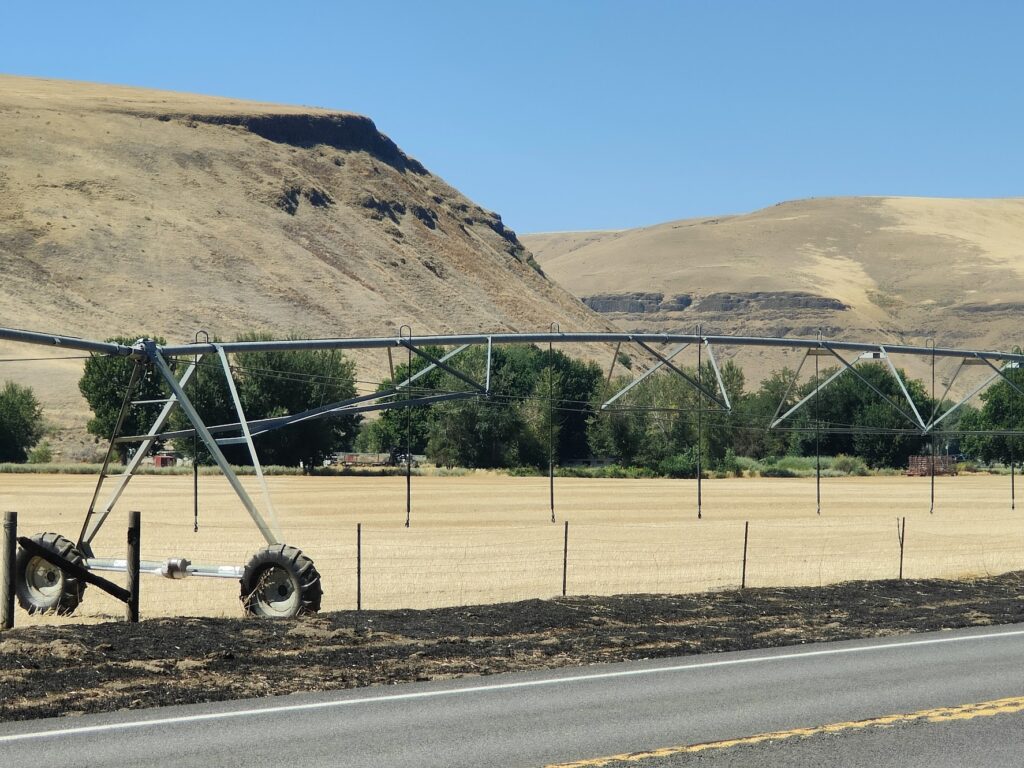
Palouse scenery
My ride today from Walla Walla passed through just 3 small towns: Waitsburg after 20 miles, Dayton after 30 miles, and then Pomeroy after 65 miles. Everything else was space in between, which largely consisted of straw coloured, hilly, rolling landscapes called The Palouse. This agricultural area is mostly known for wheat, of which I saw much evidence; but it also accounts for 30% of the world’s lentil production! Earlier in the year, according to photos on the internet, it is green; but it wasn’t today. Everything around me, including the stubble in the fields, the grasslands, even the earth, was the same light golden brown.
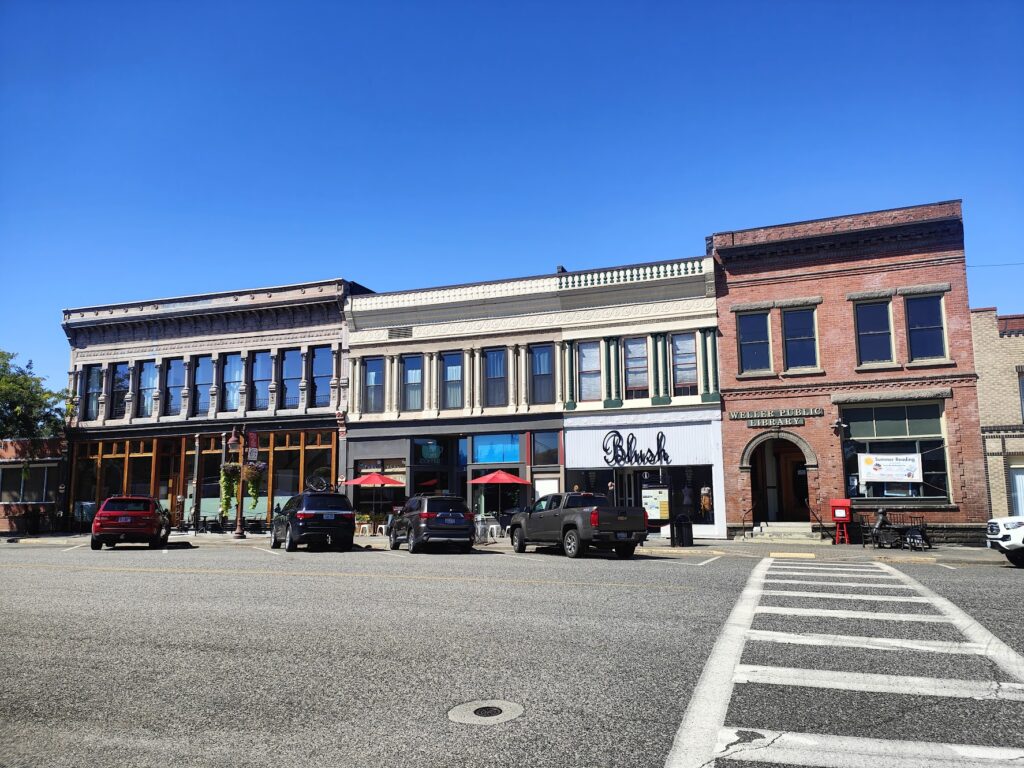
Waitsburg
I found a small store in Dixie, before I reached Waitsburg; but there was nothing in between the three small towns on my route: not a single gas station or roadside diner. Nothing at all. In the extreme heat, I had to be sure I had enough fluid to get me through up to 35 miles of pretty tough cycling. I stocked up on bottles in Dayton and made it through OK; but I went through plenty. After an hour or so all the ice had melted and everything was warm, but it was still water. You can’t risk running out.
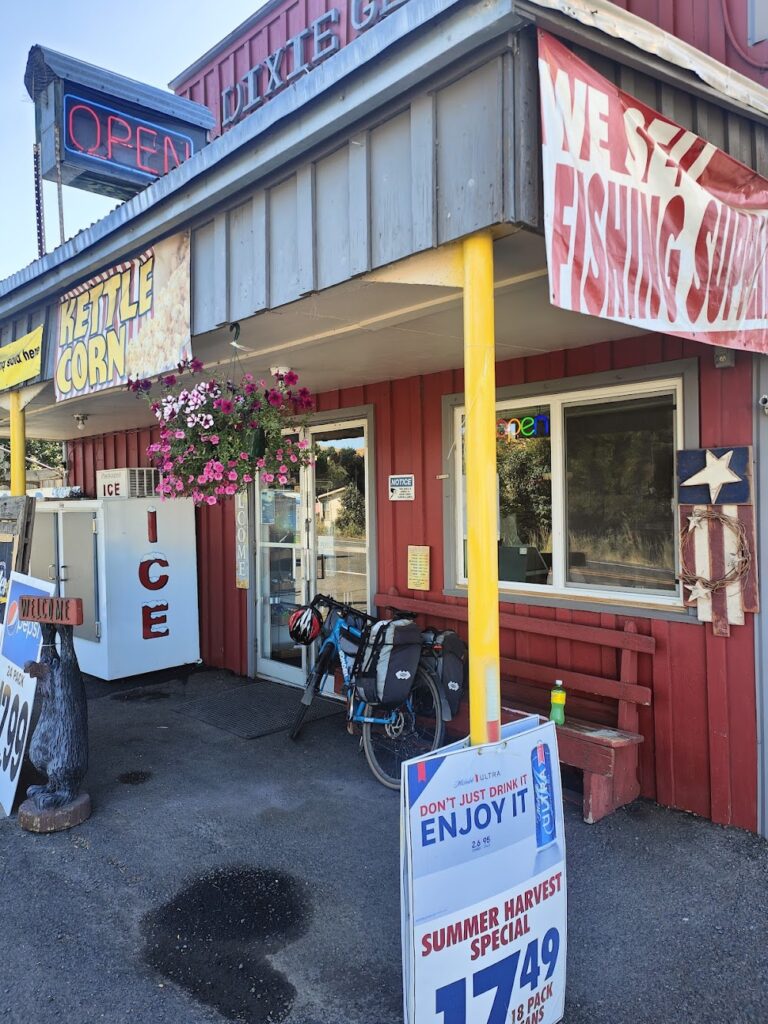
Never pass an open shop!
My entire route today was along US Route 12, which was a wide, well made highway that was fine to ride along its broad shoulder. There wasn’t very much traffic, although the traffic there was included many huge trucks travelling at speed, so you needed to concentrate. Most people give you a wide berth and it feels as safe and comfortable as most road cycling ever gets. I’ll be sticking to route 12 for a good few more days, and apparently it is a popular choice for people on rides across the country, like me. But I saw no one else on a bike today. And given the weather, that made a lot of sense.

Big shoulders
To be honest, the heat hasn’t bothered me as much as I expected. It is reasonable until about lunchtime and then the oven really gets turned up until the sun sets. But the heat is dry and your sweat seems to evaporate regardless of how much you drink. The air is warm; but I haven’t found it too bad in general. You just get on with it.
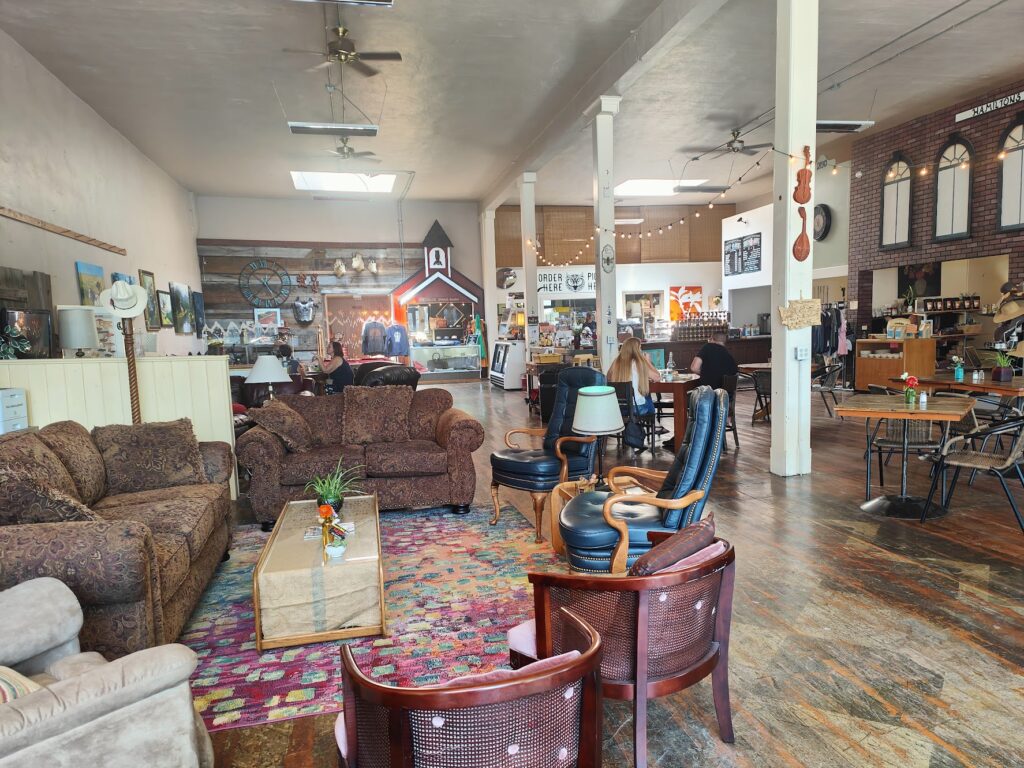
Lunch in Dayton
All three of the small towns today were quite pretty and offered refreshment in stylish cafes and shops. I wasn’t going to miss out on any of these opportunities to cool off and take on food and drink. In charming Waitsburg I enjoyed a large bowl of granola with fruit, yoghurt and honey, and some refreshing breakfast tea in an arty place with arty looking people. In Dayton, the biggest of the three, I had a very fancy salmon lox bagel for lunch in a huge, high ceilinged old emporium full of interesting artefacts. And in Pomeroy, which had vibrant hanging baskets everywhere, I had a wonderfully refreshing lemon smoothie in a lovely old fashioned hardware store that also sold ice cream. The people there were very friendly and we chatted about relatives in Birkenhead and took a selfie. Great fun.

Pomeroy selfie
But the two best moments occurred a few miles either side of Pomeroy itself, and both were extremely uplifting to a flagging cyclist in 100 degrees of heat. The first was when I was still out in the wilds, thirty miles from my last rest. A car pulled over some distance in front of me in a lay-by and two people got out. One stood next to the road and held out a bottle of water like at a drinks station for a marathon. So I stopped. They said they had some idea how tough it was to cycle here in this heat and wanted to help. I was also handed a large apple. I still had some water left… but this was COLD! I drank it down at once and thanked them profusely. What wonderful people!
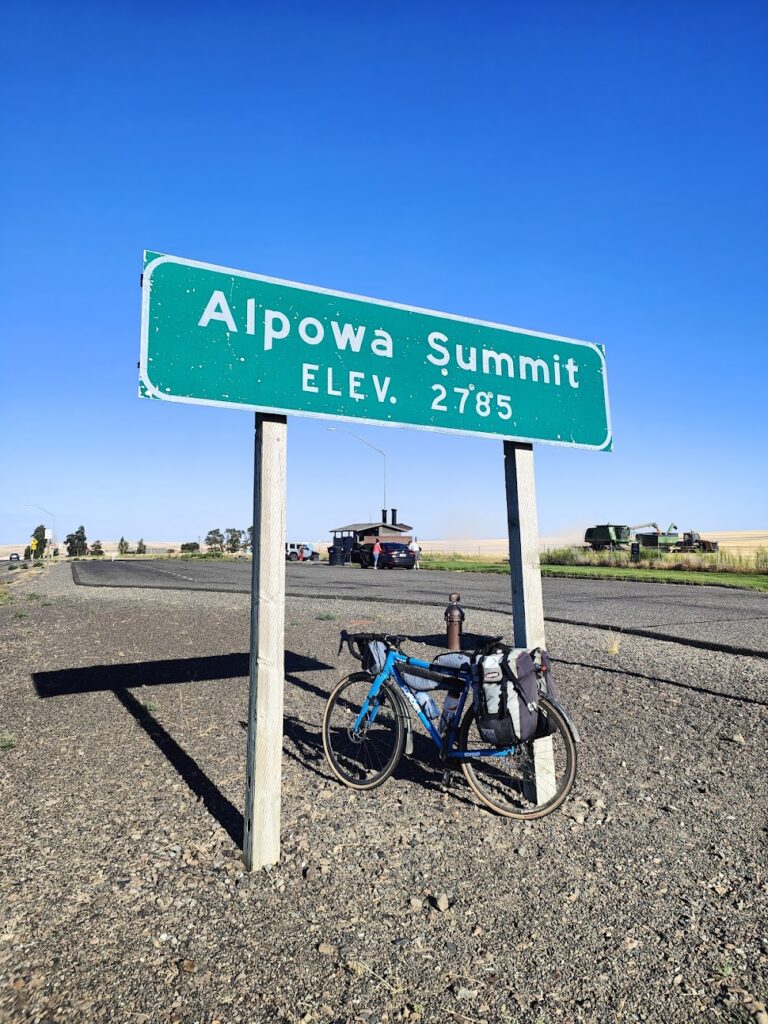
Full speed ahead
And then, perhaps eight miles beyond Pomeroy, when I was still feeling reasonably strong, I reached the top of a long, gradual climb to be faced with a high, broad plateau where a combine harvester was working. There was a rest stop for vehicles and a big sign for trucks to test their brakes. I soon found out why. For the next ten miles or so, the road plunged downhill. I freewheeled the first five miles or so before it got less steep. I forgot all about the heat and the hard day I had endured so far. This was epic! The descent was far longer than the climb and took me from Alpowa summit at 2,785 feet of altitude down to something like 700 feet, at which point the road dramatically joined the banks of the vast Snake River, now hemmed in on both sides by large brown mountains and looking a very different proposition to what I had seen yesterday. A few green trees and shrubs lined the banks and then it was desert like either side. I was reminded of the Nile. Except for the paddle steamer that went past as I watched.
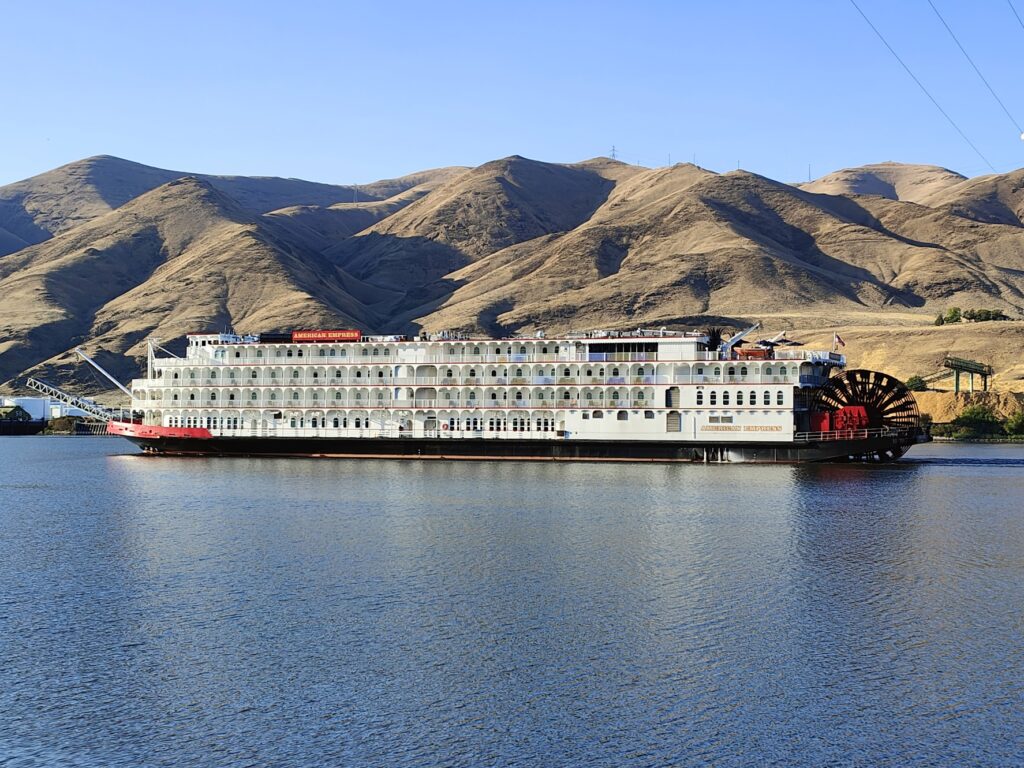
Snake river steamer
A few miles later I was in Clarkston, and then over a bridge over the Snake River into its twin, Lewiston, which is my introduction to Idaho! Yet another big river, the Clearwater, joins the Snake here, and that is what I will be following tomorrow. That requires an outrageously early start and breakfast is served from 5.30am! Time for bed.

